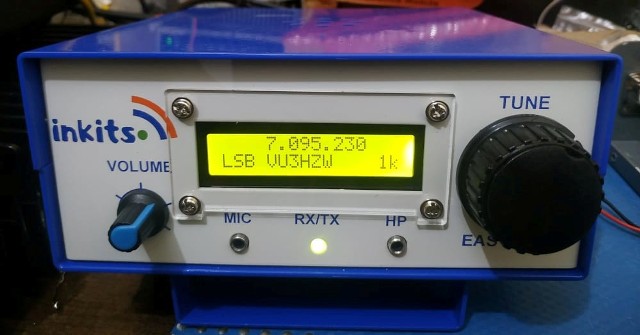Presented here is a video and details as how to connect the Bitx VFO with the Ik3OIL freq counter.
First we present the video with the Bitx VFO that is connected with the Ik3OIL Freq counter.
The FLL control circuit works with combination of some components and software on the counter and some parts are on the IK3OIL VFO pcb. The main part being the BB204 varactor diode. A buffer stage has been taken from the Ik3OIL VFO pcb.
In this demo we powered the bitx VFO and the Ik3OIL Counter . You may observe that after the red led stops to blink the FLL takes control and stabilizes the VFO.
In the demo i have also rotated the main tune and fine tune capacitor which gives complete coverage for the 20mt band. There is no drift as the tuning is stopped and the FLL control takes the new readout and starts to control the VFO.
This demo has been done on the Bitx version 3 exciter.
I would welcome any one who wants any more help.
BITX VER 3 WITH Ik3OIL FLL CONNECTED
IK3 OIL VFO PCB USED WITH THE SET UP
BITX VERSION 3 EXCITER PCB
FLL FREQUENCY COUNTER
- Some important points to be noted:
- In VFO use Polystyrene Or NPO capacitors
- Use RG174u for all RF connections
- 12 Volts can be taken to the FLL VFO pcb from the bitx power supply





















.jpg)

